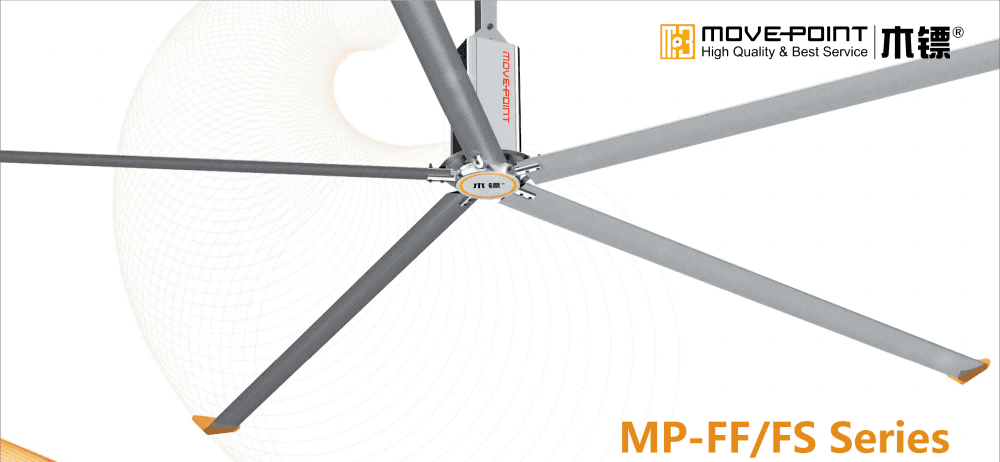What are HVLS Fans?
High-Volume Low-Speed (HVLS) fans are key in commercial ventilation. These fans suit large areas like factories, warehouses, and stores. Unlike high-speed fans, HVLS fans move air slowly but in large volumes. They have big blades and energy-efficient motors, ensuring optimal airflow and low energy use.
HVLS fans save energy by creating a breeze that cools spaces. This allows businesses to set air conditioning higher, saving on costs. Cooler environments also boost employee productivity. Thus, HVLS fans are vital for commercial spaces.
Moreover, HVLS fans improve air quality. They reduce hot spots and humidity. This is crucial for spaces with various products. Consistent air movement also protects machinery and products.
The low cost of running HVLS fans makes them popular. They are cheaper than traditional HVAC systems. This shift towards HVLS technology meets the ventilation needs efficiently.
Advantages of China HVLS Industrial Ceiling Fans
China’s HVLS industrial ceiling fans are perfect for commercial spaces. They are cheaper due to lower production costs in China. This is thanks to affordable labor and efficient supply chains. Businesses can thus save money and invest elsewhere.
These fans are also innovative. Chinese manufacturers lead in technology, offering smart controls and energy-efficient motors. This ensures optimal performance and reduces energy use.
Scalability is another benefit. Chinese manufacturers can meet large orders easily. This ensures uniform ventilation across multiple locations.
In summary, China’s HVLS fans offer a mix of low price, advanced technology, and scalability. This balance helps businesses achieve better airflow and operational efficiency.
Finding Discounts on Commercial HVLS Ceiling Fans
When buying commercial HVLS ceiling fans, exploring discounts is wise. This reduces costs significantly. Here are some strategies.
First, contact manufacturers and distributors directly. This often uncovers exclusive deals not widely advertised. Loyalty programs may also be available, offering discounts to repeat buyers.
Next, check online platforms for industrial equipment. These sites compare suppliers, often highlighting sales and promotions. Regular monitoring can lead to better deals.
Seasonal sales are another opportunity. These often occur during holidays or fiscal year-end. Buying in bulk can also yield discounts, reducing overall costs.
Lastly, consider financing options. Some manufacturers offer payment plans or leasing. This makes it easier to manage costs while enjoying the benefits of HVLS fans.
Case Studies: Success with Big HVLS Fans
Many businesses have successfully adopted big HVLS fans. Here are a few examples.
In a large manufacturing plant, inconsistent cooling was a problem. After installing HVLS fans, air circulation improved. This boosted productivity by 15%.
A distribution center faced similar issues. Before HVLS fans, it struggled with heat and stagnant air. Post-installation, cooling costs dropped by 30%. Employee comfort and retention improved.
In retail, a warehouse store also benefited. HVLS fans improved the shopping experience, increasing foot traffic and sales.
These examples show the versatility and benefits of HVLS fans across different sectors.











